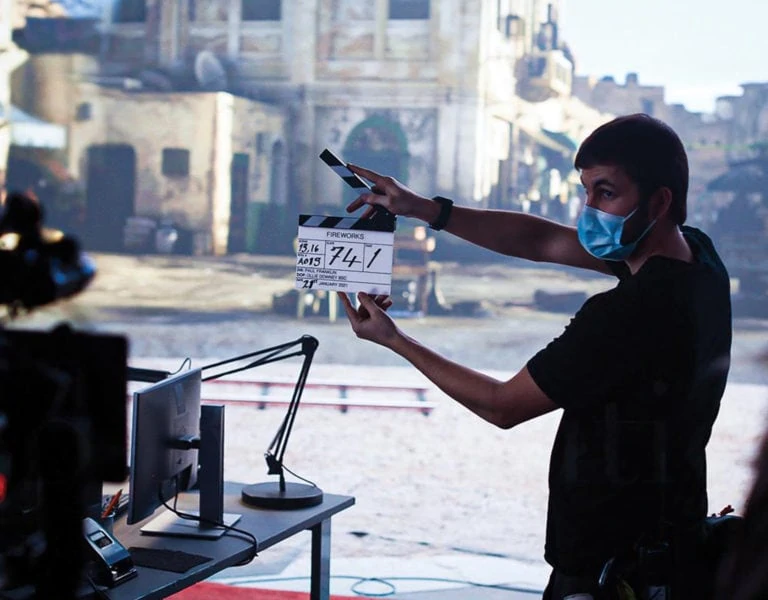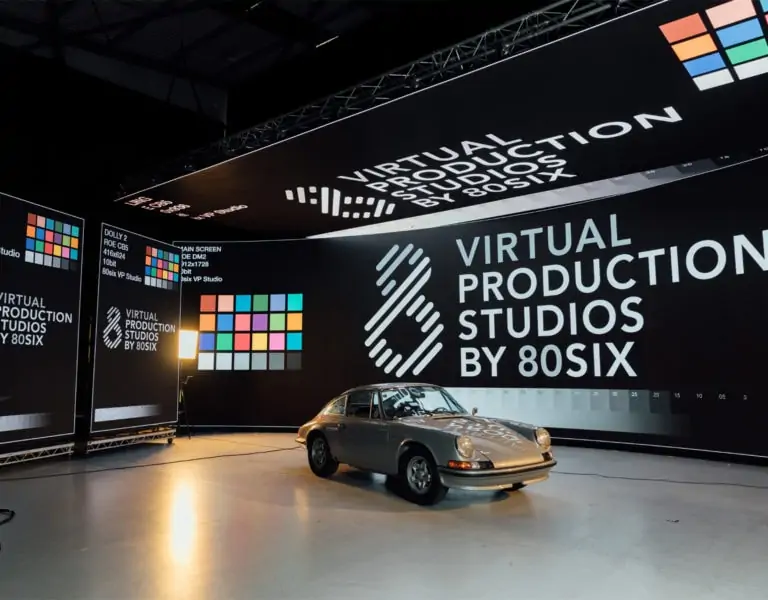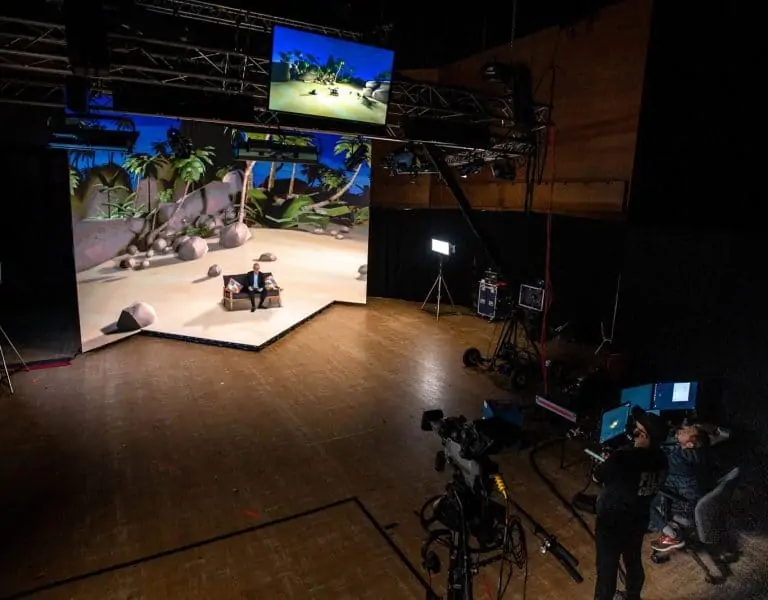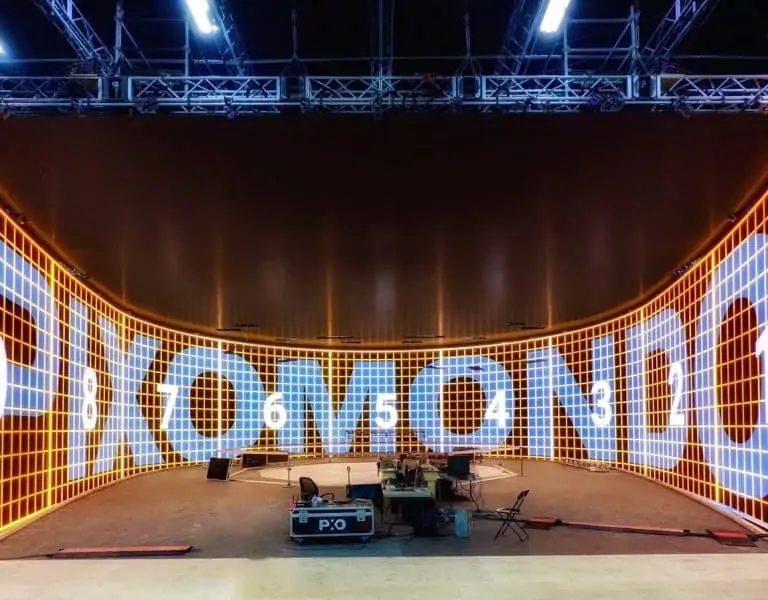Technology is revolutionising production, but it won't replace people
Talking Heads / Claus Pfeifer

Technology is revolutionising production, but it won't replace people
Talking Heads / Claus Pfeifer
Lead image: Sony PSE's film and TV content expert, Claus Pfeifer
Production processes have advanced significantly since the dawn of film, television and broadcast. The days of large-scale productions filmed sequentially by huge crews have gone, largely replaced by modern workflows and remote productions. This shift in focus has meant technology has never been as integral to production as it is today.
Cloud based remotely connected processes are moving the focus from on-set to off-site. Where the majority of decisions were previously taken on location, they are now taken in edit suites and in remote studios. In the context of a global pandemic, producers are keen to streamline processes, reduce the number of people on sets and create safer environments that are less hands on, less exposed and more easily managed.
This has created a fundamental change in how people fit into the production process, there's less focus on point of capture as aspects of production are automated or added in post-production. And with less input from people at point of capture, it raises the question, where do people fit into the future of production?
Technological evolution
From the introduction of colour and sound, followed by green screen in the Thief of Baghdad in 1940, to the first use of a Steadicam in Bound for Glory in 1976 and the first fully CGI film, Toy Story, in 1995, technology has continued to enhance and evolve what's achievable on screen.
We're now in the digital era where content is shot in formats ideal for digital manipulation, distribution and consumption. From the productions of the past, we have moved to distributed processes maintained and managed across multiple workflows and locations meaning the magic of movie making is moving further and further back from the capture of content.
An example that demonstrates this process is how cameras are now connected wirelessly and transmit on radio signals instantly. Footage can be viewed on set via tablets, on the move, on location and in off location studios via the cloud. Decisions can therefore be taken on scripts while in production, like the finale of Game of Thrones or multiple-choice endings like Black Mirror. This can be hugely beneficial as it adds a layer of security, where in a digital age leaking information is a very real danger, actors not knowing the end of their character's arc until the day of filming.
Technology has enabled content creation to become more accessible than ever before. Even moderately priced cameras can produce professional standard content, which can then be used as part of a premium production. This is also applicable for post-production also, with basic editing software coming as standard on most smartphones nowadays.
For the professionals behind the camera, this has meant less focus on the point of capture, meaning more creative freedom and more time to focus on the creativity not the process. For amateur filmmakers, it's granted access to the industry and a democratisation of the filmmaking process.
Changing roles in production
This evolution has also meant a change in production roles: Six-person teams of grips are no longer needed to operate lights and shift sets. Transportation of large cameras, lighting and audio equipment has decreased. Set designers are no longer required to build elaborate back drops or full-scale props for every scene. In a year when Covid has impacted almost every production schedule worldwide, the ability to do this has been vital.
Where some roles have naturally declined, others have been created: Technical expertise in the transmission of content is more integral to the process of filmmaking than ever. Cybersecurity and data preservation are also new challenges to be dealt with. Virtual set designers have become the norm and animators no longer work with paints and acetate but in purely digital formats.
Special effects are now predominantly in the virtual space, series like Planet Of The Apes and The Avengers would not have been previously possible without digital character overlays bringing our heroes to life. If you look at The Hulk and Caesar through the age of broadcast, it keenly demonstrates how far special effects have come and what's now possible.
These advances have given rise to a new role: The digital producer, who co-ordinates and plans projects involving the creation of digital media. They have to consider how the project will work as a digital medium, from creation to consumption. Essential at a time where streaming services are the fastest growing platform for media consumption.
Technology enabled productions
As some aspects of production have changed, others have continued to develop and producers still rely on a set of production principles as old as the industry: Good pre-production planning, innovation, scripting, costume, make-up and a good creative vision. That's where we rely on people and not the technology.
Advances in technology are allowing people not to focus on the constraints of what they can do but what's possible though the latest technology. It's empowering people to produce a creative vision that is not limited by booms, bulky lights and camera operations, but letting them execute productions that let their imaginations run wild.
Something that is giving modern filmmakers an advantage is previsualization software. It allows cinematographers and directors to plan out the shoot in a virtual environment. They can place the lights, move the scenery and set out the cameras. They can arrange things virtually before the actors even get on set, which ensures a smooth process and reduces costs on days filming.
Recently working on a shoot, there was a need to capture an actor arriving on a horse, a difficult shot to match. Eventually the crew used a Sony VENICE and removed the sensor, making it very small. A stunt man was then sat on a horse in front of the actor and captured the shot, all directed remotely by the team on monitors.
Both these scenarios demonstrate how technology is enabling a completely different approach to achieve shots and manage productions. It shows how technology is enabling and enhancing the filmmaking process, but also where people still fit in, the creativity and application of the crew was just as important.
People-powered technology
It's important to consider that the technology has not simply evolved overnight, it's part of a long process which has always had people at its core. The time and investment in research and development, the programming and coding that goes into the smallest of functions that producers can then take for granted, it's all come from the human input.
To unleash the power of images and it's the human endeavour that makes the difference. Be that the research and development team inputting their expertise and knowledge into a function so content creators don't have to master it, or a director of a blockbuster film being able to create more visually stunning content thanks to the power of technology today. We cannot forget this work behind the scenes.
One example is the Sony VENICE is now able to shoot in multiple modes, frames and formats so the director can focus on the performances not multiple takes to accommodate different needs for format/capture etc. Or advances in HDR which are letting us see more than ever before and integral to workflows.
People and technology working together
People as part of the production process are going nowhere, what's important is that we move with the technology and allow it to enhance how we create, be that in research and development, behind the scenes or in emerging roles.
A shift to work behind the scenes has rendered some roles obsolete but it has also created roles that require more technical expertise and will grow in value to the production industry. Greater connectivity is also opening a global pool of talent and opportunity.
Technology has and will continue to drive forward innovation in the industry, but we cannot devalue the importance of people in its use and application. If we continue to combine technology and people in our productions, creative success will be ensured.











